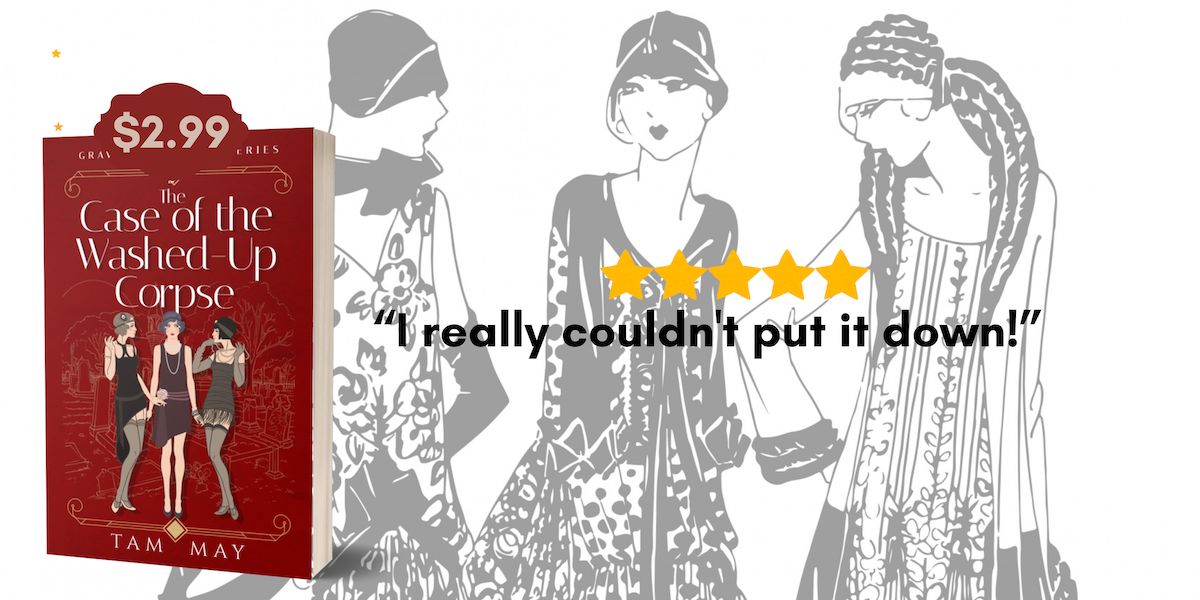Years ago, I belonged to an amazing group of creative businesswomen. When I shared with them in 2022 that I was shifting gears in my author career to focus on historical cozy mysteries, I got a deer-in-the-headlights look. One of them ventured to ask, “What’s a historical cozy mystery?”
It was my bad because I had forgotten not everyone is familiar with the word “cozy” nor are they aware historical cozy mysteries exist.
Historical cozy mystery is really a subgenre of a subgenre. In writer-speak, genre is a book’s category, usually with specific reader expectations. For example, romance is a genre (expectations: a love relationship as the main storyline and usually, though not always, a happily-ever-after ending). So is horror (expectation: You’re going to be scared out of your wits). Historical cozy mystery marries two subgenres: historical mysteries (subgenre of historical fiction) and cozies (subgenre of mystery fiction).
On the face of it, a historical cozy mystery is sort of a modern version of the traditional mystery (sometimes called the “whodunit”). Think Agatha Christie. One of my favorite things to do at the end of a particularly stressful and annoying day is to relax on my recliner with a cup of peppermint tea and open the Kindle reader on my iPad to a Poirot mystery (yes, he’s a pompous little man, but I like him). I immediately get into the story, following the clues and suspects, feeling the carefree times of 1920s England. I know I’m in for an hour of puzzle-solving and I know Poirot is going to get the criminal in the end one way or another. Nowhere else in the 21st century can you find that kind of justice. It makes me feel soothed and, well, cozy, like all the bad things that happened during the day don’t matter.

Photo Credit: DietmarRauscher/Depositphotos.com
The cross between mystery and history gets interesting when we consider the main purpose of historical fiction is to submerge readers in the past, and the purpose of mystery fiction is to present a human puzzle for the amateur sleuth or detective (and the reader) to solve. Writers of historical cozy mysteries aren’t only building a story around a crime that has to be solved. They’re also giving readers insights into another era.
And not just the daily lives of people living in that era, but criminals and crime detection. We have to remember these things have changed dramatically over the centuries. There were no cyber crimes in the 19th century. There was no DNA testing to help solve crimes until the late 20th century. Taking photographs of a crime scene appeared on the scene in the mid-19th century but wasn’t common practice until the 1920s. So crime detection was relatively primitive and pretty crude in most cases. That makes it more of a challenge for the historical sleuth or detective, but funner for readers because detectives must make do with their wits and skills rather than rely on forensic scientific evidence.
In Book 1 of my Adele Gossling Mysteries, Adele’s brother, a former big-city detective, is amazed that the small-town sheriff of Arrojo knows enough to block off the crime scene so no one will tamper with it. Even fifty years before the book takes place (1902), this wouldn’t have been the case and it’s well-documented crime scenes were trampled over by police, reporters, and sightseers. Not a great start to solving a murder.
Another thing about how cozy mysteries differ from crime fiction, in general, is they introduce you to a host of quirky characters. That’s one reason I was drawn to writing cozies as opposed to other types of historical mysteries. In a cozy series, the characters become as familiar to readers as their own family and friends because flawed as they are, they’re also likable. I’ve had several readers tell me how much they love Adele and Nin and how they’re anxious to read more about them in each book of the series.
The sleuths in cozies are always approachable, often funny, and very human. Who doesn’t love Jessica Fletcher in the 1980s hit TV series, Murder, She Wrote? She’s grandmotherly while at the same time sharp-witted and shrewd. Holmes is a cocaine addict and an egotist (at least, in my opinion) but he also cares deeply about solving crimes, more than he’s willing to admit. Fletcher and Holmes couldn’t be more different, but they share one quality, as all cozy mystery sleuths do: They’re on the side of justice. It’s hard to dislike a character who’s on the right side of the law.
Writers don’t always strive for character likability because many feel an amiable character is unrealistic and too Pollyannaish. But cozies aren’t about realism. They’re about escaping into another world where justice is served and criminals are always punished. And with historical cozies, you get the double-whammy: Not only do you get to escape into a “crime doesn’t pay” world but you get to do it in another era.
So if you’re ready to give historical cozy mysteries a shot, I invite you to check out my Adele Gossling Mystery series. I published the first book exactly two years ago and it has not failed to delight readers. The Carnation Murder is forever free on all the bookstore sites. You can get more information about it plus links to download the book here.
If you love fun, engaging mysteries set in the past, you’ll enjoy my novella The Missing Ruby Necklace! It’s available exclusively to my newsletter subscribers and you can get it here. By signing up, you’ll also get news about upcoming releases, fun facts about women’s history, classic true-crime tidbits, and more!


